A Profile of Courtney Goodin
Part Two: Digits and Widgets
by David Waelder
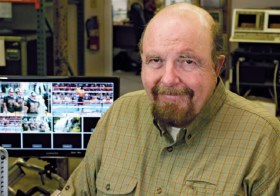
The project that shaped the direction of Courtney Goodin’s career began on a dare. In 1982, he and Laurence Abrams were working on a commercial for Members Only clothing and the spokesperson was being cued with a QTV Teleprompter. Cuing devices (then and now) work by reflecting an image of the words onto a partially silvered pane of glass mounted in front of the camera lens at a 45-degree angle. The speaker can read the text while looking directly at the camera. It’s an ingenious device but the process of scrolling the text was quite primitive at that time.
The copy was printed onto rolls of paper with tractor-feed perforations at the sides. A mechanism with motors, belts and pulleys would roll the paper from one spool to another to move text across the screen. The potential for intrusive noise was obvious and the clattering machinery was a particular nuisance on that assignment. At lunch, Courtney sat down with the prompter operator and asked him, “Is anyone making a computer prompting system?” He replied, “Nah, it’s impossible to do on a computer. Computers just aren’t fast enough. There’s no way to do it on a computer.” Courtney just said, “OK,” but he took that as a challenge.
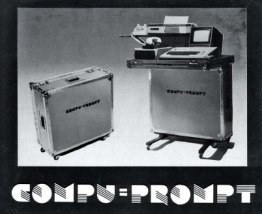
Courtney was familiar with the graphic capabilities of the Atari computer from his experience developing the Graphic Master image-editing program that he was marketing. He thought that the advanced graphics chipset used by the Atari was up to the task but there were some programming challenges. An effective prompting system must work smoothly; glitches or herky-jerky movement would be a distraction and undo the benefit of the prompting. There is a natural hiccup as the computer periodically refills its memory cache and Courtney had to devise a workaround that would permit smooth scrolling through lengthy passages. And it was important that it scroll smoothly both forward and backward and permit quick, jerk-free changes of direction. When he had that worked out, he developed a remote control using the same boxes he had used for the Goodsound Talk Back units. An operator would be able use the remote to scroll the text forward and back and smoothly ramp the speed up and down to match the reading pace of the talent.
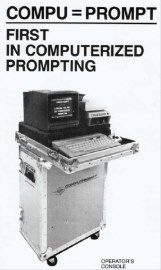
With the software issues largely resolved, he and Abrams, his partner in this venture, turned their attention to designing a marketable product. Courtney redesigned the camera-mounted beamsplitter and devised more flexible support hardware to accommodate 16mm and 35mm film cameras and smaller video cameras as well as pedestal-mounted studio TV cameras. Previous teleprompters were designed for permanent installation in environments like news studios but their device could be quickly attached to a wide range of cameras without adapters or a bulky three-foot base plate. They also designed a custom case that opened into a freestanding operator’s console for quick setup. They called their new product “Compu=Prompt.” It was the first personal computer-based prompting system. This accomplishment was honored with an Emmy Award in 2010.
Courtney also devised a digital dongle to provide copy protection. A dongle is a device that must be plugged in to a computer to authorize use of a software program. Very little was available at the time to protect against an unscrupulous user simply copying the software and building a unit. While the use of an electronic key to restrict unauthorized use of software was fairly common, most of these devices were a simple resistor circuit and were easily circumvented. Courtney’s use of a digital code in the dongle was sophisticated for its time.
Producers were hesitant to adopt the new device but Courtney and Laurence knew they had a winner when they wrapped a commercial several hours early. Looking back on the day, the only factor that was different was the performance of the prompter. There was no downtime for copy to be reprinted and threaded onto a roll, no crinkling paper spoiling takes, no difficulty matching pace of the copy. When they needed to re-cue to the beginning, it was accomplished instantly with the push of a button, no more waiting for the prompter to roll the long roll of paper script back to the beginning. In short, there were no prompter delays at all.
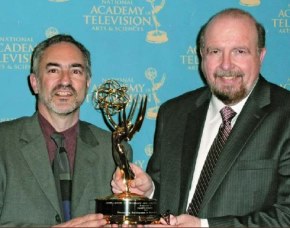
It was a triumph of clever programming and engineering. A $150 Atari computer with a hand controller and Courtney’s proprietary software replaced a $12,000 mechanical prompter and did so with much greater efficiency. Courtney was able to sell the Compu=Prompt system for $4,000, an enviable markup.
As producers became aware of the advantages of this more flexible system, demand grew and Courtney had inquiries from all over. He even managed to sell several of his Atari-powered devices to IBM! He demonstrated a prompter for the Reagan White House but had no answer for their dilemma of what to do when the President would wander off script; for someone determined to go their own way, even a prompter was no help.
Regrettably, Courtney was a much better inventor than businessman. Although he had some interest from Panavision, the industry leading camera company, he elected to license the Compu=Prompt technology to Dreamdata, a partnership with two other people originally formed to market computer video games. But Dreamdata had no vision, no data, only dreams; sales and rentals of Compu=Prompt products became their only source of revenue. After several years of increasing sales and expansion, the other partners conspired to divert that income to themselves. It took a lawsuit to wrest the rights away from his former partners and Courtney and Laurence were unable to develop the product in a competitive market until the suit was settled 2½ years later. ProPrompt, the new company they formed, was successful in the rental market but found sales difficult since the Compu=Prompt system was still being marketed by the former partners during the lawsuit. By the end of the lawsuit, it had been more than seven years since the introduction of Compu=Prompt and competing computer systems from other prompting companies had been able to establish a foothold.
The bad experience recovering the rights to his prompting invention discouraged Courtney from developing other products that would need to be built and sold. He continues to provide the C-stand to microphone adapters sold through LSC and Coffey but is otherwise out of the hardware market. Our very small market didn’t support volume manufacturing so Courtney needed to fit components into boards and solder them by hand to make his preamps and talk-back boxes. Writing software offered the same satisfaction of finding a solution to a problem without the necessity of breathing toxic fumes from a hot iron.
He would soon have an opportunity to practice those code-writing skills. He purchased a Sound Devices recorder to transition from DAT to nonlinear sound. Right away, he was frustrated by his inability to listen to the recorded audio and also see a timecode display as the file played. This could be accomplished by playing the file in the recorder, of course, but not once the file was transferred and played in a computer. When he inquired, he was told that Pro Tools would accomplish this but he balked at purchasing a $1,200+ program just to listen to his own audio and check timecode. Learning that there was no reasonably priced software to do this, he turned his attention to making his own. A healthy part of success in any venture is recognizing exactly what needs to be accomplished and what is already available. Microsoft Windows comes bundled with Media Player software that can play any standard audio file. Moreover, Microsoft permits users to devise programs that use the core features of the Windows software so long as they don’t change the control interface. He wrote code that would use the Media Player engine for the audio reproduction while reading the metadata and displaying running timecode in a large window that could be used as a digital slate. It consolidated the metadata from many files into a human readable spreadsheet-like format that could be saved to disk. He also envisioned an application that might free him from the process of keeping sound logs, a laborious process with his cramped handwriting.
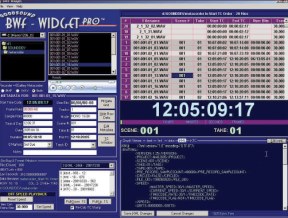
The resulting software, BWF Widget, has become an essential tool for both editors and sound professionals and is now available in a suite of variations. Licensed to Sound Devices, it is the basis for their original Wave Agent program.
In the course of developing BWF Widget, Courtney confronted the problem of an absence of file standards among audio equipment manufacturers. The various companies, from Aaton to Zaxcom, would interpret timecode implementation protocols differently and each was loath to bend their practices to match the other. Acting as an outsider with no personal agenda or competitive hardware to market, Courtney helped persuade the various companies to come to an agreement on how timecode would be applied in various frame rates and at different sample frequencies. Attempting to bring order to this Babel may be his greatest single contribution to professional audio.
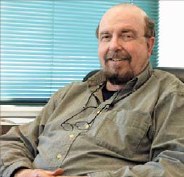
The limited success of ProPrompt meant that Courtney had to continue working regular sound and video playback assignments to earn a living. Recently, he has been doing the video playback for Dexter. In some ways, his need for regular work has been our gain as he is presently serving his third term on the Local 695 Board of Directors and he has served several times on the Constitution and By-Laws Committee. He continues to refine BWF Widget and remains active in the field so there is no telling where his fertile imagination may yet take us.